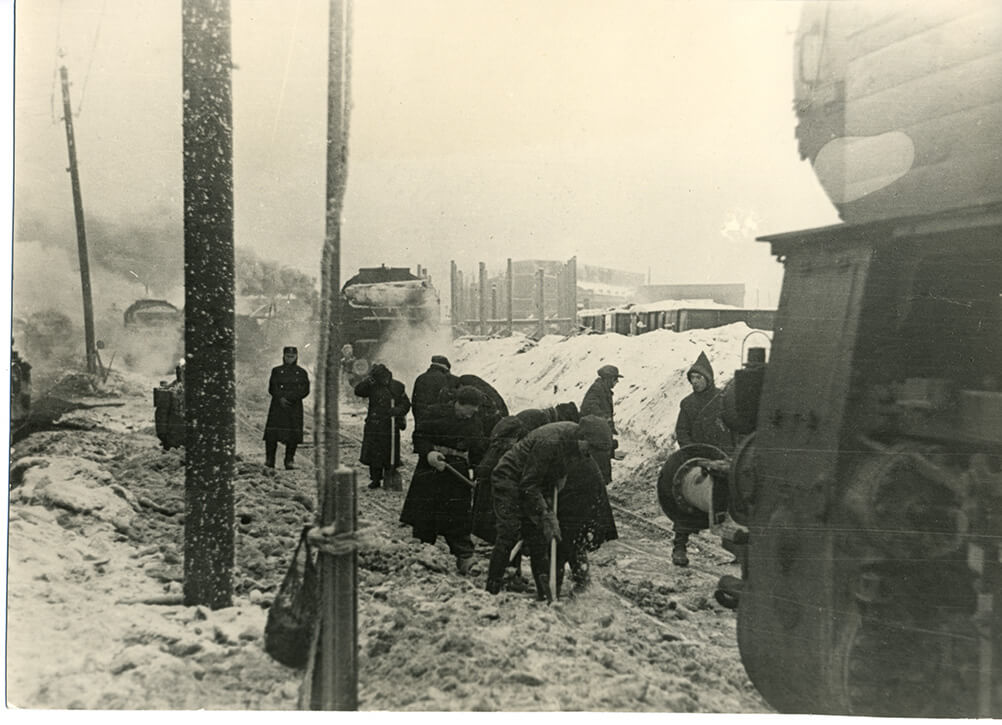Minsk Ghetto
Several thousand Byelorussian Jews from the Minsk ghetto were executed en masse in November 1941 in order to make room for Jewish deportees from the occupied territories of Central and Western Europe. A transport with the designation F left Brno on 16 November 1941 and continued along the route Wrocław/Breslau–Warsaw–Bialystok–Volkovysk–Baranovichi–Minsk. The deportees from Brno were placed in a separate ghetto (Sonderghetto), along with those from Hamburg and Bremen. The ghetto comprised about 40 streets and lanes, as well as a Jewish cemetery. It was surrounded by thick rows of barbed wire. The living conditions were dire. Most of the wooden barracks were without electricity, water or sewerage. Wells were the only source of water; in the winter, the inmates drank melted snow. The severe winters, insufficient medical care and constant hunger soon claimed the lives of hundreds of people. The ghetto also provided a source of slave labour for the German army. Liquidation operations were a part of life in the ghetto. SS squads took prisoners away to a mass execution site near Maly Trostenets on the outskirts of Minsk. Mobile gas chambers (gas vans) were used for the first time in the ghetto in July 1942, which is when most of the prisoners from the Brno transport were killed. The liquidation of the ghetto took place in September 1943. A group of prisoners able to work were then put on a train to Lublin. Only one woman and twelve men from the Brno transport remained alive at the time of liberation.

